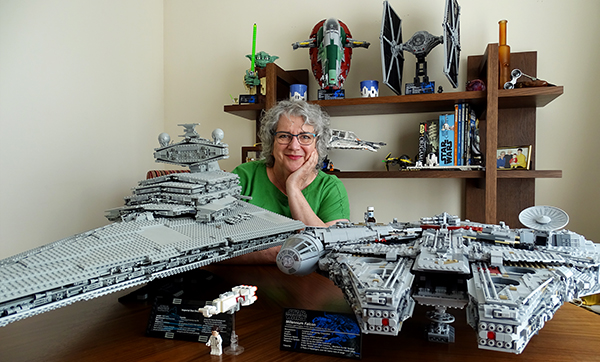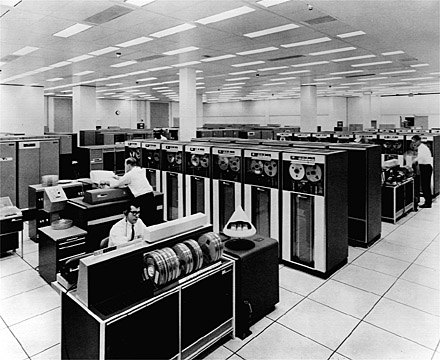
’66 & Learning:’ A Female Tech Pioneer | WBX Profile
“I’ve got three passions in life: Manchester United Football Club, my sons, and Lego[s].”
As a pioneering female in STEM, Webexpenses Implementation Manager, Hazel Macgregor, recalls that she always wanted to be “an engineer of some sort”. She loves to figure out how pieces fit together.
But growing up in rural Scotland, at a time when “5 year old girls weren’t allowed to get mucky fiddling about with engines and fixing things,” it seemed unlikely. While she enjoyed watching her dad employ his “practical engineering” skills, she instead was made to go shopping with her mother - reluctantly.
Now 66, Hazel’s current ambition is “to be the oldest IT-focused person at Webexpenses - maybe even ELMO - and to be a female doing it.” But, she confesses, “40 years ago when I started, I didn’t even know what software was!"
So how does a girl, expected to follow societal norms of the 1950s and unaware of software, lead a decades-long STEM career?
We asked.
Her advice: “Don’t take no for an answer. You’re better than you think. Don’t let society make you think you can’t do this or that. You can be whatever you like. It’s good to be radical.”
Being Radical
Hazel grew up in a mining village in rural Central Scotland. A singer and academic in her youth, she decided to leave her English and Music studies at the University of Glasgow after two years. She wanted to work - and ended up in the not the fanciest of places:
“A cocktail bar in Central Scotland isn’t New York,” she laughs. “And although it said Bacardi on the label, it was cheap white rum from an unlabeled bottle in the back.”
Naturally, she went from working at a pub, to working for the Local Authority. It was here she had her first experience with information technology (IT) as a cartographic draftsman - “yes, man!, even though we were all female,” she recalls.
It was the first digital mapping project in a Local Authority in Scotland and it used one of the original Digitables. A map would be spread over a drawing board that had a low-voltage electrical mesh embedded. A pin would be used to record the coordinates. It was the mid-70s and map companies had just started to try to produce maps electronically.
The digital revolution was quietly underway. And Hazel, bitten by the tech bug, was about to be one of the first women in it.
“I didn’t set out to be one of the first women in tech and I don’t consider myself a feminist. My grandmother always said, ‘I’m better than no-one, but no-one's better than me.’ Which is to say, I think everyone should be treated as equals - and just be the best we possibly can be.”
Though, after a long pause, concludes, “Actually, I am a feminist.”
Entering Information Technology
At the time, the UK government was running a training course on how to become a programmer to retrain people for IT professionals. In her mid-twenties, Hazel became one of only two women to graduate from her programming class.
Back in the mid-seventies, computers were enormous. They were “invented to replace repetitive functions humans did manually in an office, like take a list of numbers, add them up, and times them by whatever your code says,” Hazel simplifies. And when she learned to program, it was a rudimentary series of Binary instructions for the computer - kind of like spreadsheet formulas we are familiar with today.
“Do you know when I started working in software, PCs didn’t exist? The first program I ever wrote when I was training was on paper tape or a punch machine. You put your stack of punch cards in the card loader for the machine to read. And God forbid you drop your cards!”
After she completed the training course, Hazel was back in public service. A programmer writing code that processed parking tickets for the Local Authority. This job also dabbled in systems analysis. She would speak to the business and find out what the problem was and what program she could write to solve it. “I am able to listen to somebody and figure what they need,” she said of developing her analytical skills.
Data + Discrimination
In the late 1980s, Hazel moved into program management; one of few females in the role. She worked for an American company doing data analysis and project management. And was particularly fascinated by data. She realized something it would be years before Silicon Valley cashed in on:
“Data is the foundation of IT. Well organized data is worth more than anything”.
Commuting between the UK and the US, Hazel shifted from IT to business development. Translating how IT can support the business and solve its problems. She was identifying and “building what they needed” for the early 90s digital transformation.
But then she experienced perhaps the most egregious display of sexism in her career. In a discriminatory move that was indicative of the times, yet still happens today, Hazel was let go from her job just weeks before the birth of her second son.
The Indestructible
Not one to be kept down, Hazel reentered the workforce soon after she gave birth. She began working for British Telecom (BT), then one of the largest European mobile phone services providers, as the industry began to boom.
Remember the “Indestructible” Nokia 3310?

Hazel helped with BT Mobile’s voice recognition software. Voice recognition is often built for a Standard American accent, so BT required a “translation” to different dialects and Hazel helped her colleagues to write software that understood Scottish accents. Then, shortly before the .com bubble burst, she left tech.
“I have a strong social conscience; I want the work I do to have meaning.”
In the early 2000s, Hazel upgraded her degree, got her teaching license in Computer Science. For a decade, she taught teenagers how to use computers. Then, served as test engineer for a police interview recording device; the sole female on a team of men. After that, she worked for a healthcare software provider that kept patient records for psychological services.
Planning to retire, promoted
In 2015, and on the heels of her intended retirement, Hazel joined Webexpenses. And in January 2020, she was promoted to Implementations Manager. Which means she manages the UK implementation team to ensure customers get what they want.
“I use a mixture of skills I’ve gained in my career to make sure the team is properly configuring Webexpenses software features to meet the requirement specs of our customers. And to make sure our users are happy.”
Then, in January 2021, Hazel was promoted again. Asked to utilize her previous project management experience as an Internal Projects Manager. Hazel now works across departments with development, sales, implementations, and product. She employs her decades worth of IT experience in a culmination of her success-in-action.
“If I go back in my career, most jobs I’ve been in, I’ve been the most senior woman [...] and that doesn’t mean it was particularly high. But I spent a lifetime trying to get women into IT, and that's my baby. However, I want IT to be open to whomever.
You don't have to be a math whiz or have a degree in Computing Science; if you have the attitude and aptitude there are lots of roles in IT for women. And luckily I work for a company that recognises this.
And many companies are reluctant to hire people of a certain age and I’m happy that I’m still going and working for a company that embraces inclusion and diversity. I'm 66 and still learning, still excited about it, and above all, still love it. So goodness knows when I'll retire. Working for Webexpenses is honestly the most content I’ve ever been in my whole life... and that includes being back in the bar in Scotland.”



